With last Friday’s Supreme Court decision on same-sex marriage and this weekend’s commemoration of the 50th anniversary of the 1965 march in Philadelphia that helped spark the LGBT-rights movement, it seems a good time for a post about one of the most famous lesbian figures in the Rosenbach collection: the writer and socialite Mercedes de Acosta.
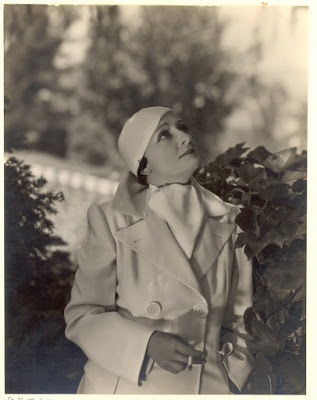 |
|
Unknown
photographer, photograph of Mercedes de Acosta. 1934 Acosta 22:02. The Rosenbach of the Free Library of Philadelphia. |
Mercedes de Acosta was born in New York in 1893, one of eight children in a rich Spanish-Cuban family. Her older sister Rita (profiled in an earlier post) became a prominent socialite, art patron, and fashion icon whose circle of friends included Degas, Rodin, Tolstoy, Bernhardt, Debussy, and Sargent. Rita’s wardrobe became the start of the Costume Institute at the Metropolitan Museum of Art.
Acosta discovered a love for the theater early, along with a love for other women. Among her early relationships were actresses Alla Nazimova and Tallulah Bankhead. In 1917 Acosta began a long-term relationship with dancer Isadora Duncan, who wrote her very explicit love notes. During this period Acosta also began her public career as a writer; over her lifetime she
would produce three volumes of poetry, two novels, four produced plays
(and many other that were not performed) as well as screenwriting.
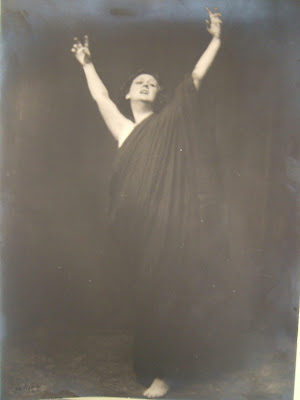 |
|
Arnold
Genthe, portrait of Isadora Duncan.
Acosta 19:11. The Rosenbach of the Free Library of Philadelphia.
|
In 1920 Mercedes married the painter Abram Poole, although she chose to keep her own name (and would later join the Lucy Stone Society which promoted this practice). Her marriage, which lasted until 1935, when the pair parted amicably, did not change her desire for other women and she continued to have liaisons, both long-running and fleeting. One of her most significant relationship during the 1920s was with the actress Eva Le Gallienne, for whom she created several plays, including Sandro Botticelli, a fictional account of Botticelli’s model for his famous painting The Birth of Venus.
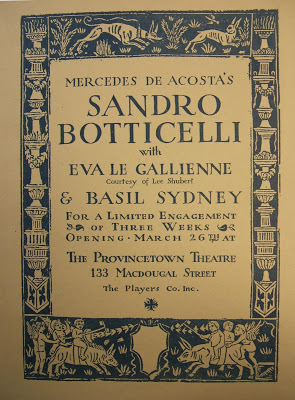 |
| Poster for Sandro Botticelli. 1923. Acosta 22:04. The Rosenbach of the Free Library of Philadelphia. |
In 1931 Acosta met Greta Garbo and, as a friend explained, “Once Mercedes met Garbo, all she did was dream of Garbo.” Their friendship was mercurial, however, with Garbo alternating between spending time with Acosta and deciding that she needed space. Although Acosta’s feelings for Garbo were vividly romantic, it is
unclear if Garbo felt the same way towards her and Garbo publicly
maintained that the relationship was platonic. In the interstices of her obsession with Garbo, Acosta also had relationships with other women, including Marlene Dietrich, who gave her this lipstick-stained scarf, among other gifts.
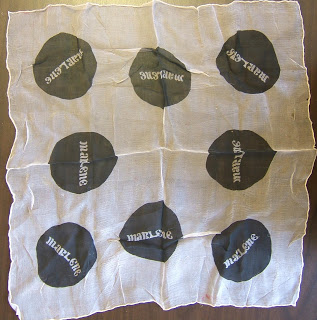 |
| Scarf from Marlene Dietrich. 2006.0009 . The Rosenbach of the Free Library of Philadelphia. |
Although many discussions of Acosta focus on her lesbian relationships, Acosta’s star-studded circle of platonic friends also included many famous men, ranging from Cecil Beaton to Ram Gopal to Igor Stravinsky; you can check out a previous Rosen-blog post to see her copy of All Quiet on the Western Front inscribed by Erich Maria Remarque.
Late in her life, in dire financial straits due to illness, Acosta published a memoir, Here Lies the Heart, in 1960. Although she was circumspect regarding the details of her relationships, many of her friends were outraged to have their stories linked with hers in print and several, including Garbo, severed all contact. Her financial difficulties also led Acosta to sell her papers to the Rosenbach. The collection includes working material for Here Lies the Heart which reveals the fluidity of Acosta’s approach to her own story. It also includes her personal correspondence, a handful of objects (like Dietrich’s scarf) and hundreds of photos, including some oddities like this souvenir picture of Mercedes with Gertrude Stein in a donkey cart in Mexico.
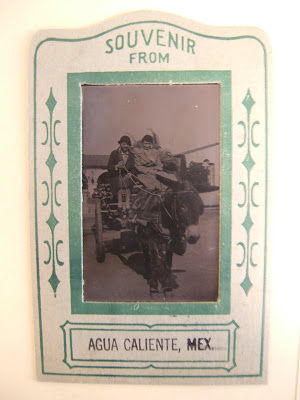 |
| Photograph of Gertrude Stein and Mercedes de Acosta. Acosta 19:47. The Rosenbach of the Free Library of Philadelphia. |
At Acosta’s request, some sections of the collection were sealed until after the death of the correspondent; however they are all now available and you are welcome to delve deeper into her fascinating story simply by making a reading room appointment.
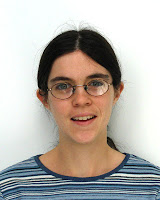
Kathy Haas is the Associate Curator at The Rosenbach of the Free Library of Philadelphia and the primary poster at the Rosen-blog..
